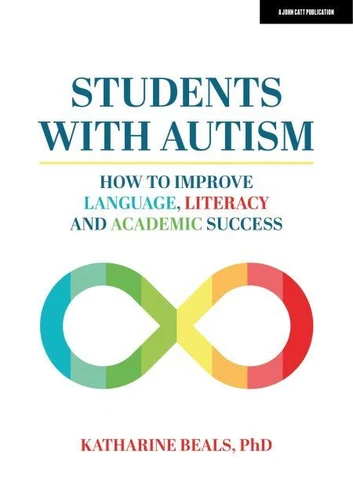Students with Autism: How to improve language, literacy and academic success
Par :Formats :
Disponible dans votre compte client Decitre ou Furet du Nord dès validation de votre commande. Le format ePub protégé est :
- Compatible avec une lecture sur My Vivlio (smartphone, tablette, ordinateur)
- Compatible avec une lecture sur liseuses Vivlio
- Pour les liseuses autres que Vivlio, vous devez utiliser le logiciel Adobe Digital Edition. Non compatible avec la lecture sur les liseuses Kindle, Remarkable et Sony
- Non compatible avec un achat hors France métropolitaine
 , qui est-ce ?
, qui est-ce ?Notre partenaire de plateforme de lecture numérique où vous retrouverez l'ensemble de vos ebooks gratuitement
Pour en savoir plus sur nos ebooks, consultez notre aide en ligne ici
- Nombre de pages266
- FormatePub
- ISBN978-1-915361-54-7
- EAN9781915361547
- Date de parution29/09/2022
- Protection num.Adobe DRM
- Infos supplémentairesepub
- ÉditeurJohn Catt
Résumé
Beals describes the root causes of the language and learning challenges in autism, their various academic consequences, and a variety of tools and strategies for addressing them. Drawing on what the most current evidence shows about the nature of autism and which therapies are most successful, the book discusses the implications for autism-friendly instruction in academic subjects, noting the ways in which today's classrooms come up short, and suggesting various adjustments that teachers can make.
Instead of focusing on social and behavioral issues, general accommodations, and general ways to address learning difficulties, Beals zeros in on academics, on accommodations within specific academic subjects, and on techniques that target autism-specific deficits, situating the issue of educational access within the broader context of disability rights, neurodiversity, and debates about what disability rights and neurodiversity should encompass.
Complete acceptance of individuals on the autism spectrum must include complete educational access. This means rethinking assumptions about autistic students, about how we teach expressive language, about how we teach reading comprehension, and about what and how we teach in the many K-12 classrooms attended by autistic students.
Instead of focusing on social and behavioral issues, general accommodations, and general ways to address learning difficulties, Beals zeros in on academics, on accommodations within specific academic subjects, and on techniques that target autism-specific deficits, situating the issue of educational access within the broader context of disability rights, neurodiversity, and debates about what disability rights and neurodiversity should encompass.
Complete acceptance of individuals on the autism spectrum must include complete educational access. This means rethinking assumptions about autistic students, about how we teach expressive language, about how we teach reading comprehension, and about what and how we teach in the many K-12 classrooms attended by autistic students.
Beals describes the root causes of the language and learning challenges in autism, their various academic consequences, and a variety of tools and strategies for addressing them. Drawing on what the most current evidence shows about the nature of autism and which therapies are most successful, the book discusses the implications for autism-friendly instruction in academic subjects, noting the ways in which today's classrooms come up short, and suggesting various adjustments that teachers can make.
Instead of focusing on social and behavioral issues, general accommodations, and general ways to address learning difficulties, Beals zeros in on academics, on accommodations within specific academic subjects, and on techniques that target autism-specific deficits, situating the issue of educational access within the broader context of disability rights, neurodiversity, and debates about what disability rights and neurodiversity should encompass.
Complete acceptance of individuals on the autism spectrum must include complete educational access. This means rethinking assumptions about autistic students, about how we teach expressive language, about how we teach reading comprehension, and about what and how we teach in the many K-12 classrooms attended by autistic students.
Instead of focusing on social and behavioral issues, general accommodations, and general ways to address learning difficulties, Beals zeros in on academics, on accommodations within specific academic subjects, and on techniques that target autism-specific deficits, situating the issue of educational access within the broader context of disability rights, neurodiversity, and debates about what disability rights and neurodiversity should encompass.
Complete acceptance of individuals on the autism spectrum must include complete educational access. This means rethinking assumptions about autistic students, about how we teach expressive language, about how we teach reading comprehension, and about what and how we teach in the many K-12 classrooms attended by autistic students.



